Welcome to the captivating world of Oriental cats! Known for their sleek bodies and wide spectrum of colors, these cats share many traits with the Siamese breed. But they have a character all their own.
In this article, we'll deliver the fascinating history of the Oriental breed, including its origins and evolution from Siamese cats. We'll also describe the striking physical features that make Orientals stand out, from their coat variety to their eye color.
But that's not all. We'll uncover what makes the Oriental breed so unique. How does their active nature contribute to their distinct body shape? What are the potential health concerns that Oriental cat owners should be aware of?
So if you're a cat enthusiast eager to understand the Oriental breed better, or if you're considering adopting one, this article is just for you. Read on for a comprehensive guide to the elegant, energetic, and diverse world of Oriental cats.
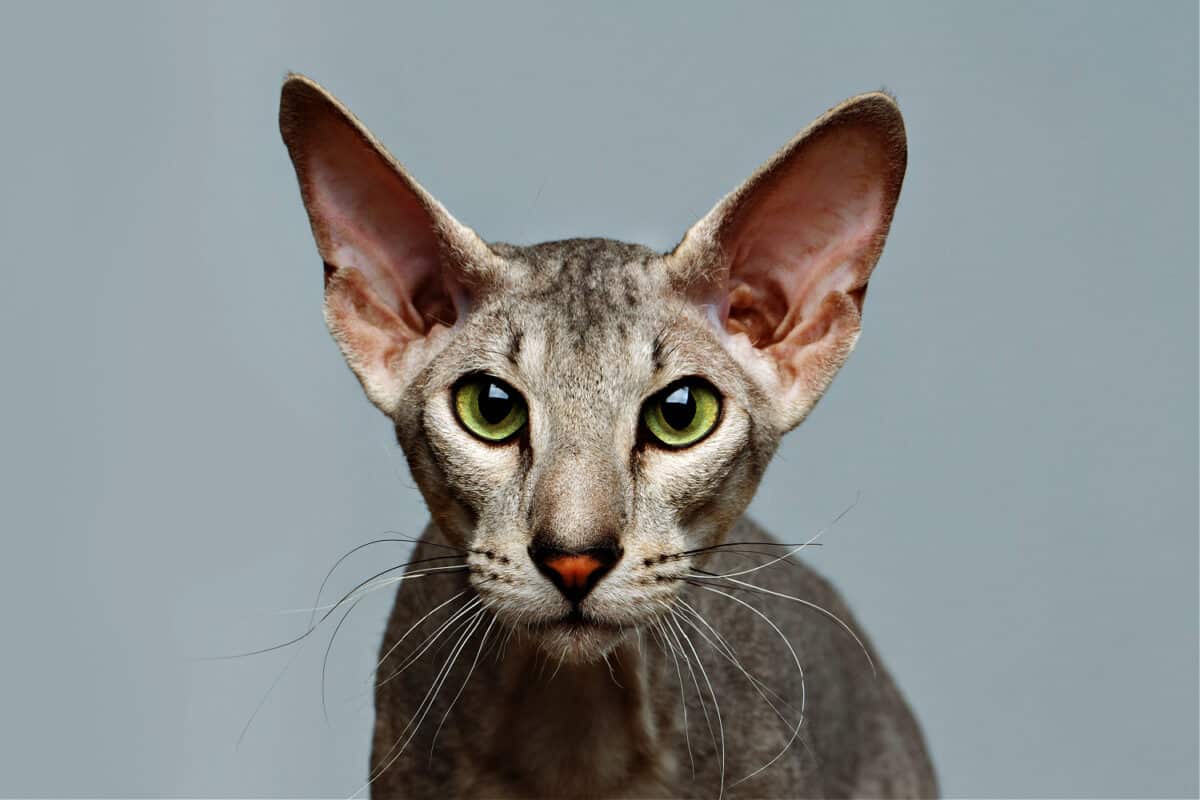
The Oriental Cat - An Overview
Meet the Oriental Cat
Have you ever come across a cat that's an artful blend of elegance, personality, and a mesmerizing range of colors? If not, let's introduce you to the Oriental breed.
In simplest terms, you can think of the Oriental as a Siamese cat, but without the characteristic pointed coloration. These cats exude an unparalleled charm. With their elongated bodies and diverse color patterns, they can easily steal any cat lover's heart.
Every Oriental cat is a walking art piece, boasting an array of colors and patterns. They proudly carry the elegance and personality of Siamese cats. But, they bring something extra to the table. It's their unique coat patterns, free from the points associated with their Siamese cousins.
Popularity Across Shorthair and Longhair Breeds
Over time, the Oriental breed has won the hearts of many. This isn't surprising. Their compelling mix of physical beauty and charming personality is hard to resist. It's no wonder they're a sought-after breed, in both their shorthair and longhair variants. Each variant has its own appeal, further broadening the breed's fan base.
The Oriental cat is a breed that skillfully blends the Siamese's build and personality with a multitude of coat colors and patterns. These cats are not just beautiful to look at.
They make engaging companions, equally capable of winning your heart with their looks and their lively antics. If you're on the lookout for a pet that brings a unique blend of charm and character, the Oriental cat could be the perfect fit.
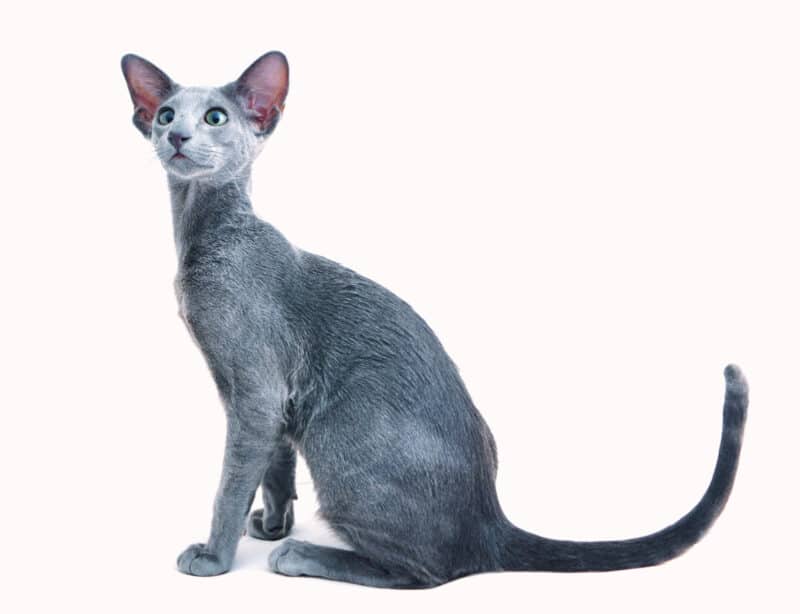
The Oriental Cat - Breed History
Origins and Evolution
The Oriental cat breed has a rich and intriguing history, rooted deeply in the diverse feline heritage of Siam, present-day Thailand. From the pages of history, it's clear that the original Siamese cats, those early settlers of the West, did not exclusively have the colorpoint pattern we commonly associate with the breed today. In fact, Siamese cats boasted an array of coat colors. However, a pivotal shift occurred in the 1920s when the Siamese breed association decided that the colorpoint coat pattern would be the only acceptable pattern for Siamese cats.
Birth of the Oriental Breed
The 1950s marked the beginning of a new chapter in the story of Siamese cats. Breeders in the United Kingdom began to experiment with Siamese cats that didn't adhere to the colorpoint coat pattern restrictions. They envisioned cats that embodied the Siamese build and personality, but with diverse coloration.
Their efforts came to fruition in the 1970s, when these multi-colored Siamese cats were officially recognized as a new breed - the Oriental. At the time, the UK referred to the breed as the 'Foreign type cat.' Still, the term 'Oriental' gained global acceptance and is used in most cat associations today, with the notable exception of the white Oriental, which in the UK is still referred to as the 'Foreign White.'
Siamese Connections
According to the Cat Fanciers' Association (CFA), the Oriental breed foundation is fundamentally rooted in the Siamese breed. The original Siamese cats, both pointed and solid colors made their way to the UK from Siam in the late 19th century.
Interestingly, the gene that restricts the color to the points is a recessive one, meaning the majority of the Siamese cats were solid-colored. When these cats were bred, the pointed offspring were classified as Siamese, while the solid-colored ones were often referred to as 'non-blue-eyed Siamese' or 'foreign shorthair'. Other breeds, such as Havana Brown and the Korat, were also developed from these cats.
SIGN UP FOR THECATSITE'S EMAIL UPDATES >
Recognition and Breed Variation
The Oriental Shorthair was recognized as a distinct breed for championship competition by the US-based CFA in 1977. Later, in 1985, the CFA recognized the bicolor variant of the breed. The UK-based Governing Council of the Cat Fancy (GCCF) followed suit, recognizing the breed in 1997. However, there were some coat conformation differences between the GCCF and CFA standards.
The Germany-based World Cat Federation (WCF) acknowledges the breed, but it has its own set of color requirements, which are significantly unrestrictive, barring white and pointed cats.
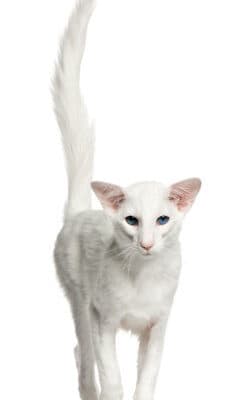
In CFA, some point-colored offspring from Oriental Shorthair parents fall under the "any other variety" (AOV) category, but depending on their pedigree, some may compete as Colorpoints. In The International Cat Association (TICA), these cats are often considered and compete as Siamese.
A Spectrum of Varieties
Today, the Oriental breed boasts an impressive variety of coat colors and patterns, reflecting its diverse genetic heritage. The breed continues to be a fascinating study in the art of cat breeding, symbolizing an intricate balance between genetic diversity and selective breeding.
The Oriental cat's story, woven through time and across continents, offers a compelling narrative of the continuous evolution of cat breeds. As we move forward, who knows what new, beautiful variations of this captivating breed might still emerge?
The Oriental Cat - Breed Description
Physical Characteristics
Oriental cats are a vision of grace and elegance, their physical attributes echoing their rich ancestry. These cats share the slender, sleek body shape associated with modern Siamese cats.
Their physique is marked by an elongated, tubular body, perched on tall, elegant legs. The body culminates in a long, tapering tail, adding to the Oriental's overall sense of lithe finesse.
The distinctive facial features are accentuated by a wedged head shape, with large ears set wide apart and large almond-shaped eyes. These eyes, while capable of a range of hues, should align with the coat's color and pattern.
The Spectrum of Coats
The coat of an Oriental cat is a spectacle of nature's palette, presenting a seemingly endless array of colors and patterns. Solid Orientals, particularly, offer a striking spectacle, with coats available in hues ranging from stark black and dreamy blue to pristine white and an array of solid colors in between.
The breed also offers tabby variants, coming in various tabby patterns and color combinations. Moreover, recent years have seen the emergence of bi-color Orientals in show rings, capturing hearts with their unique two-toned coats.
In a nod to their diversity, only white Orientals can have blue eyes, offering a striking contrast against their pure, snow-white coats.
Hair Length Varieties
Orientals are available in both shorthair and longhair variants, further extending their range of physical diversity. Shorthaired Orientals sport a smooth, close-lying coat, requiring minimal grooming and maintaining a neat appearance.
In contrast, longhaired Orientals flaunt a semi-long, silky coat that gracefully drapes their slender bodies. Despite its length, the coat does not mat easily, making grooming relatively hassle-free.
Personality Traits
Orientals are energetic, active, and inquisitive cats that thrive on attention. Echoing their Siamese heritage, they are notably vocal and expressive, actively communicating with their human companions.
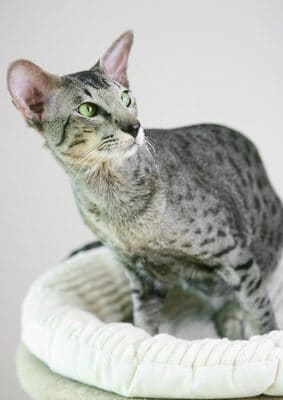
Much like the Siamese family of breeds, Orientals also display high locomotion levels, showing keen interest in their surroundings. Their curious and engaging nature makes them a lively and fascinating companion.
Breed Varieties
The Oriental Shorthair is a proud member of the Siamese breed family, appearing in a variety of solid colors, and patterns that include smoke, shaded, parti-color/tortoiseshell, tabby, and bicolor. However, not all these variants are universally acceptable to all organizations recognizing the breed.
Size and Strength
Despite their sleek appearance, Oriental cats possess a muscular physique. They are typically medium-sized cats, with males averaging between 8-12 pounds (3.6-5.4 kg) and females usually weighing less than 8 pounds (3.6 kg).
The Oriental breed, in all its diverse glory, offers a unique combination of physical elegance and a vibrant personality. Its broad range of colors, patterns, and hair lengths, coupled with its lively and inquisitive nature, makes this breed a captivating choice for cat enthusiasts.
Maintaining the Oriental's Physique - Special Needs
Despite their high-maintenance appearance, Oriental cats are relatively low-maintenance when it comes to grooming. A simple weekly brushing to rid their coats of any dead hair usually suffices to keep their sleek coats in top form. However, these cats' maintenance needs extend beyond their grooming.
As an active breed, Orientals need to maintain this activity level throughout their lives. This is not just for their health, but also to preserve their distinctive slender body shape. Cats that do not get sufficient exercise may gain weight, compromising their unique body shape.
To prevent this, owners are encouraged to engage their Oriental cats in daily play sessions. This not only provides the necessary exercise but also satisfies their inquisitive and playful nature. Coupled with a balanced diet, this active lifestyle ensures your Oriental cat maintains its svelte physique.
Potential Health Concerns
Orientals share a close kinship with Siamese cats, and as a result, they might also be prone to similar health conditions. Regular veterinary check-ups and a healthy lifestyle go a long way in maintaining an Oriental's overall health.
Concluding Thoughts On The Oriental Cat Breed
The Oriental cat breed, with its striking physique and diverse coat colors, is a captivating sight to behold. Coupled with their high energy levels and communicative nature, Orientals make engaging and affectionate companions.
While they do require an active lifestyle to maintain their unique body shape, their grooming needs are minimal. Being aware of potential health concerns allows for early detection and treatment, ensuring your Oriental cat remains a healthy and lively member of your family.
In essence, these cats, with their multi-faceted personalities and stunning physical traits, offer an enriching pet ownership experience that's hard to match. Their enigmatic charm and vibrant energy ensure they're never just a pet, but rather an unforgettable part of your family's journey.
SIGN UP FOR THECATSITE'S EMAIL UPDATES >
Comments? Leave them using the form below. Questions? Please use the cat forums for those!
Note: We may get commissions for purchases made through links on this page.

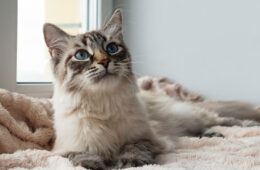
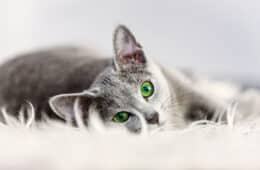
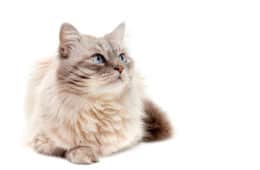
3 comments on “Oriental Cats Breed Guide – A Detailed Look”